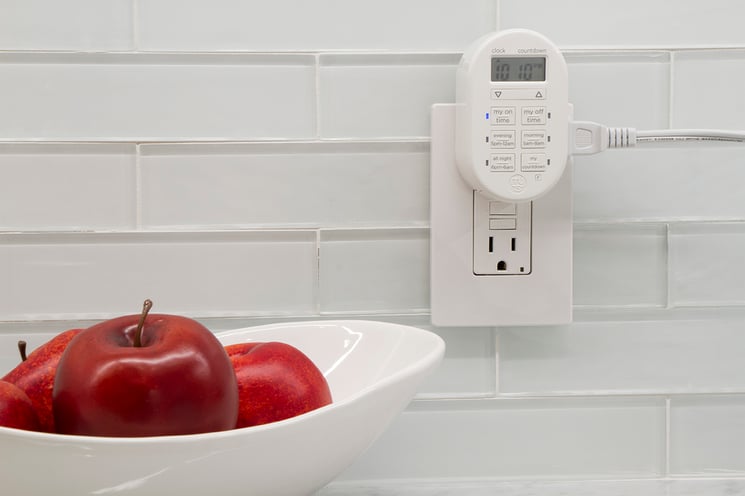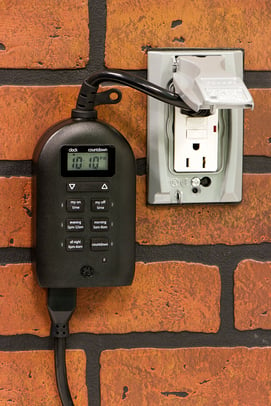
Timers are one of those nifty products that you almost never think about, but can save you time and money! Have you ever thought, “Wouldn’t it be nice if this appliance automatically turned on/off at X time?” Or, “I wish I could come home to my lights already on, but I don’t want to waste electricity by leaving them on all day!” In the timer edition of our Q&A series, we’re going to answer all your timer-related questions so you can confidently choose the right timer to make your life easier.
Q: What are timers used for?
A: Simply put, a timer allows you to automate your lighting and small appliances. Once set up, your lights or appliances will turn on and off at the times you selected. There are many uses for timers. And which timer you choose depends on location, type of lighting, and several other factors. You can find some of our favorite ways to use timers here and here.
Using a timer can help you cut costs in lighting your home by avoiding leaving indoor and/or outdoor lights on all night. Timers make it easy to come home to a lit home without keeping your outdoor light fixtures on while you are gone. They can also be used for small appliances such as coffee makers, hair styling appliances or space heaters, so you don’t accidentally leave them on all day. Timers are also useful for low-cost home security. Set your timer to turn your lights on and off to give your home a lived-in look, even when you are away.
The most difficult part may be narrowing down exactly what type of timer will be best for you. For outdoor uses such as patio or

Q: Are timers difficult to install?
A: If you have no experience with electrical wiring, it’s best to consult an electrician before tackling a project such as an in-wall timer. In-wall timers are great for lighting fixtures that are controlled by a light switch, such as under cabinet fixtures or porch lighting. If you have the know-how, you can replace the light switch with an in-wall timer to easily automate your kitchen, garage, or porch lighting.
If you can plug the appliance or light into an outlet, setting up a timer is even easier, and can be managed safely by DIY beginners. Simply plug the timer into the wall outlet and the appliance or lighting fixture into the timer. Set the current time and choose your on and off times.
Q: What do polarized and grounded mean?
A: Polarized plugs have two different sized slots, the neutral is the larger slot, this allows for a device to be plugged in, in only one way to prevent plugging in your device incorrectly.
A three-prong design has a grounded bottom prong as an extra safety precaution. This prevents you from being shocked when plugging in your appliance.
What’s really important about this distinction between these types of outlet plugs is to make certain that the timer you purchase has the correct corresponding outlet for the device you want to control. Extension cords and household appliances typically have the three-prong grounded plugs so check what type of outlet you need to save yourself a headache when you are setting up your timer.
Q: What is the difference between 7-Day and 24-Hour timers?
A: A 24-hour timer is certainly easier from a set-up perspective. It repeats the same programs every single day and thus you only need to set the current time and select your preferred times for your devices to turn on and off. With a
With a 7-
Another plus of having a 7-

Q: What is a countdown useful for?
A: The "countdown" feature allows you to set a one-time program to turn your devices off after a set amount of time. You can set it for anywhere between 1 minute and 24 hours. This feature is useful for one-off tasks that do not need to be programmed to happen regularly.
Q: What is the difference between Custom and Preset settings?
A: For your convenience,
However, if there is not a preset button available for the time frame you are needing, it is still fairly easy to set a custom time for your appliances to turn on and off.
Q: How do wireless timers work?
A: The wireless versions of

